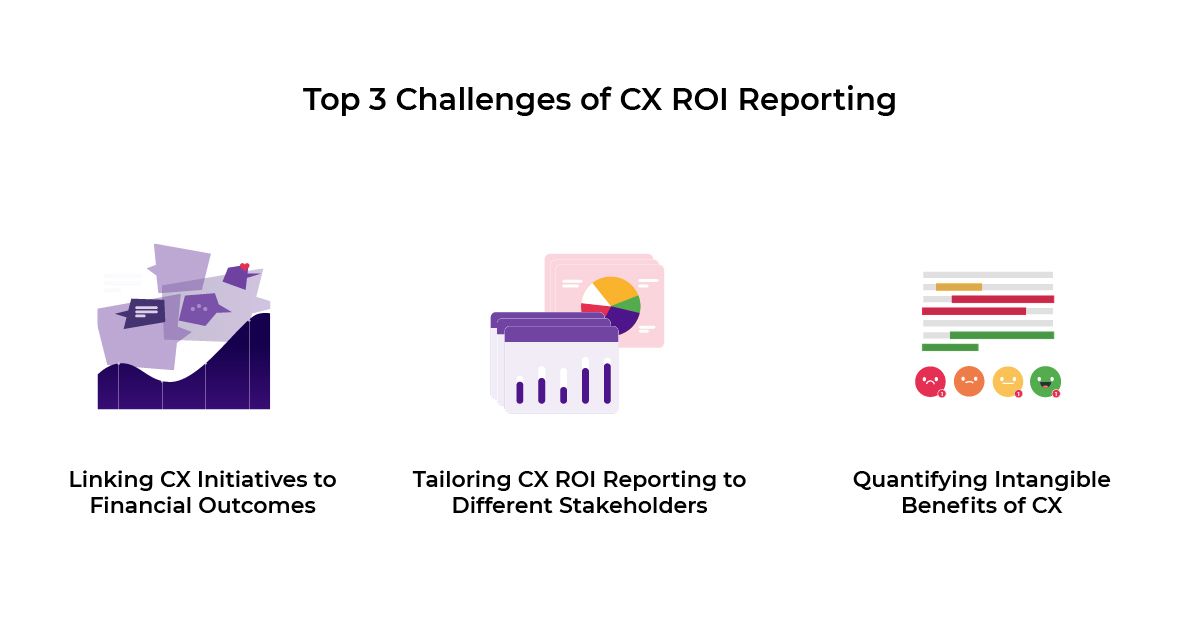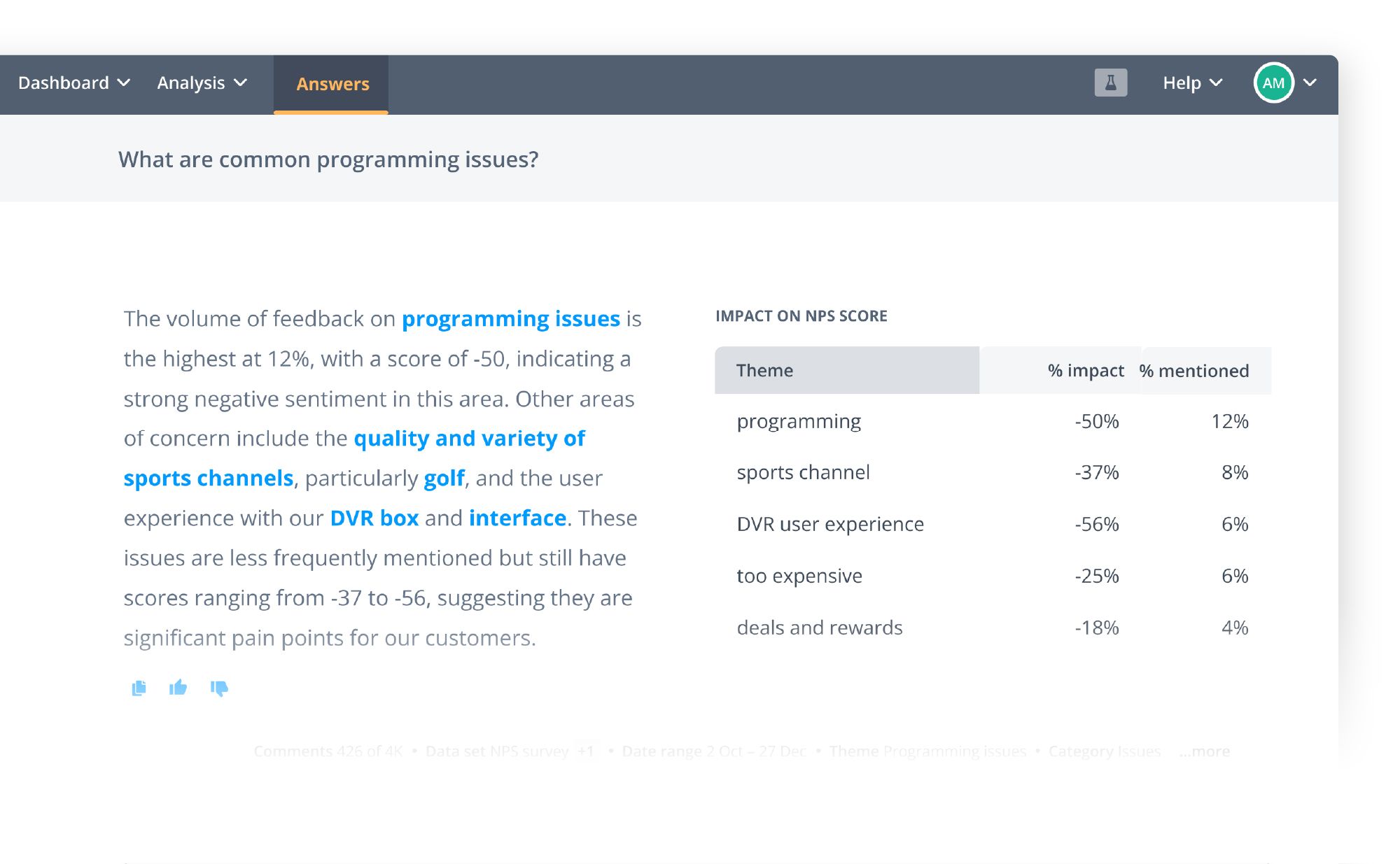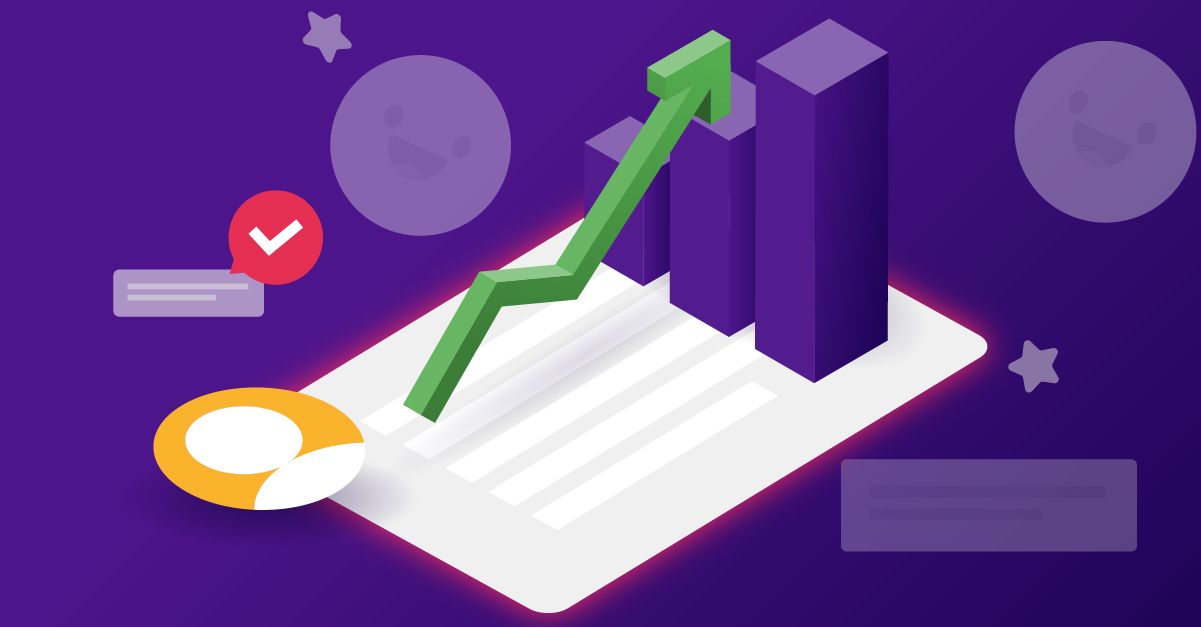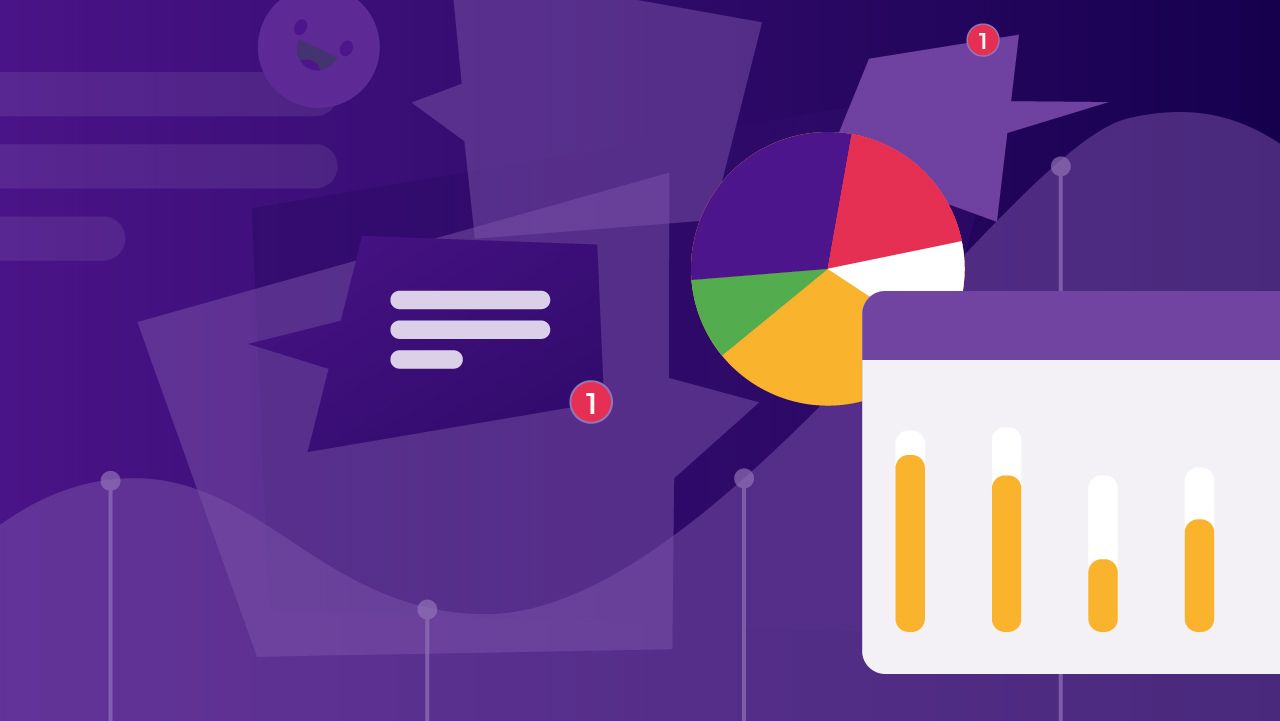Top 3 Challenges of Reporting ROI in Customer Experience (CX) and How to Solve Them
We all know that happy customers are good for business. But proving it with hard numbers? That's been a major headache for a long time. Why? Because feelings are hard to measure, and those feelings often live at the heart of the customer experience.
Those feelings are worth figuring out. Companies focused on delivering a great customer experience (CX) see up to 60% higher margins than the competition! When you're asked to prove ROI, that's often when things get tricky.
The Problem with Proving CX Success
Think of a clunky online checkout process. Sure, you might still get sales, but it's like driving with a flat tire - you're getting somewhere, but it's a bumpy ride! Every abandoned cart, every frustrated customer... that's potential profit leaking away. And here's the kicker: over 60% of customers are ready to jump ship after a bad experience. That alone shows how tightly CX is woven into your bottom line.
But how do you actually prove that fixing the checkout snag was the magic bullet that boosted your numbers?
That's where things get tricky. Let's break down why:
- Feelings vs. Facts: Happy customers are awesome, but 'happiness' doesn't appear on a spreadsheet. We need to translate those warm fuzzies into hard numbers.
- It's a Team Effort: Did sales spike due to a killer new product, excellent marketing, or your improved checkout? Isolating the impact of CX gets messy.
- The Right Tools: Gut feelings won't convince the boss. You need data that tells the CX story clearly and helps you understand your Voice of the Customer (VoC).
Why Your CX Success Stories May Not Be Convincing
Paul Stevenson, a leader in Customer Experience strategy, emphasizes that it's about showing the impact of what your brand does, not just what the brand says. While making someone's day through customer support is amazing, you need to connect these positive experiences back to the bottom line to secure the budget you deserve.
Unlocking the Power of Voice of the Customer (VoC) Data
Customer feedback can be a goldmine. But only if you know how to sift through the noise. Rants, raves, random emojis – it's overwhelming, and it's easy to miss the insights that truly impact your bottom line. That's where AI becomes your unfair advantage. It cuts through the clutter, instantly analyzing reviews, support tickets, and all that messy customer chatter to pinpoint what really matters.
Measuring the ROI of Customer Experience Improvements
- Beyond Gut Feeling: Sure, you might sense customers are happier after an upgrade. But AI quantifies that change, proving the value of your efforts.
- Precision Targeting: See the exact pain points causing abandoned carts, or the features getting consistent rave reviews. Focus your CX work where it counts.
- Data-Backed Decisions: Show stakeholders the direct link between a smoother checkout process and increased sales. That's how you get buy-in for future CX investments.
The First Step - Get the Right Data (Hint: Talk Isn't Enough)
Relying on customer comments and surveys is great, but you need more. That's the realm of VoC (Voice of the Customer) data. AI tools with Natural Language Processing (NLP) are your secret weapon – they'll churn through customer reviews, support chats, all the messy stuff – to find the trends that matter.
What an AI Upgrade Offers You
According to CX leaders, 44% of them swear by AI and machine learning for actionable customer info. This stuff works because it:
- Converts feelings into numbers: Goodbye guesswork. Now you can measure how happier customers = more sales.
- Scales: It'd take you a century to read every support chat. An AI does it in minutes.

Challenge 1: "Did this CX project *really* boost sales?"
You've streamlined checkout, sales are up, and you're feeling like a CX superstar. But then that little voice of doubt creeps in – was it your awesome upgrade, a sizzling new product, or just a fluke? Isolating the true impact of individual customer experience improvements can be a major headache.
How Customer Experiences Impact Financial Metrics
The Balanced Scorecard is your go-to tool here. It tells you to go beyond sales and track those customer satisfaction metrics and all that good stuff. But here's the problem: feedback is messy.
A balanced scorecard is a strategic management tool that helps businesses track and measure performance beyond just financial metrics. It typically includes four perspectives:
• Financial: Traditional metrics like revenue, profit, and ROI.
• Customer: Satisfaction, loyalty, and retention rates.
• Internal Processes: Efficiency, quality control, and streamlining operations.
• Learning & Growth: Employee development, innovation, and knowledge sharing.
The balanced scorecard helps align actions and goals across the organization, ensuring a focus on both short-term financial results and long-term drivers of success.
You've got ranty reviews, essays in the survey box, and a mountain of support tickets. Manually finding the patterns that actually matter? It's a nightmare; chances are you're missing out on those game-changing insights that can boost your bottom line.
AI-driven thematic analysis to the rescue for your CX strategy
Think of AI-driven thematic analysis as a super-powered translator for customer feedback.
Here's what it can do:
- Forget Reading Every Single Review: AI sifts through it all in a flash, highlighting the good, the bad, and the recurring themes. With tools like Thematic Answers, you can directly interact with the data by asking the platform questions.
- Hidden Gems Revealed: It turns out that one clunky feature is driving negative reviews, or customers secretly LOVE the new help center. This is the intel you need.
- Break Down the Feedback Silos: Reviews, surveys, support chats... AI pulls it together, giving you that complete picture of what your customers really experience.

How this upgrades your Balanced Scorecard game
So, you're not just guessing how CX projects impact the numbers. Now, you can:
- Show the Money Trail: "We improved X, customer satisfaction shot up, and look - sales followed." That's powerful.
- Be Proactive, Not Reactive: Track customer sentiment in real-time, spot those negative shifts early and fix things before they turn into lost business.
- Smarter Processes, Happier Customers: Identify the root causes behind those support tickets, optimize how you do things, and save costs while improving the experience.
- CX-Focused Teams: When everyone can easily understand why customers feel a certain way, it drives better decisions across the board.
Challenge 2: "My boss cares about profit, not smiley customers"
Not everyone gets as excited about a 5-star review as you do. Different teams need different ways to see how awesome CX translates into results they care about. Here's how to break it down:
For the Execs - It's All About Growth & Strategy
They live and breathe those big-picture numbers. So, your report needs to show:
- CX = Cash Flow: "Focusing on customer experiences reduced support costs by a whopping 20%! Oh, and it also boosted the average order value by 15%. BOOM!"
- Long-Term Wins: Don't just track sales. Are customers sticking around longer? Spending more over time? Link CX to those high-level loyalty metrics.
For the Managers - Operations Are Their Life
They're in the trenches, dealing with the daily grind. Show them how CX makes their job easier:
- Problem-Solving Intel: "Shipping delays are the top cause of frustration. Let's explore those faster options to get those satisfaction scores up."
- Smarter Work, Not Harder: "By streamlining X process, we cut down on support calls AND saved X hours each week. Imagine what the team could do with that extra time!"
For the Frontline Teams - Give Them the Good Stuff
They're the ones talking to customers every day. Empower them with insights, not just data:
- The Power of "I love...": "Customers are RAVING about our new how-to videos. Let's make more, and get ready for awesome reviews!"
- Quick Wins: "Multiple people mentioned issue X. Can we do a fast fix? Seeing those positive comments roll in is seriously motivating."
It's not about dumbing things down; it's about showing each team how CX makes their specific goals easier to achieve. When everyone sees that connection, you get serious buy-in for your CX initiatives.
Challenge 3: "How much is 'brand trust' worth?"
Okay, 'brand trust' sounds fluffy. But every time a customer raves about your brand or sticks with you despite a hiccup, trust in action is a direct result of positive customer experiences. Here's how to start proving it:
Go Beyond the Stars: Sure, a 5-star review is great. But why did they give it? Dig into the comments! "Amazing support saved the day" is more powerful than just a number.
Metrics That Speak Their Language:
- NPS (Net Promoter Score): Tells you who's ready to shout about you from the rooftops (and who needs attention). Track this over time to see how CX efforts move the needle.
- CLV (Customer Lifetime Value): It is the ultimate loyalty metric. Loyal customers who trust you spend more over time.
Small Wins, Big Proof: Don't try to boil the ocean.
- Pick a targeted customer experience problem: Slow onboarding leading to churn? Lots of "how do I..." support questions?
- Fix It: Make onboarding smoother, create a killer knowledge base, whatever it takes.
- Track the Impact: Did churn decrease? Did support tickets go down? Tie that back to your CX fix – that's your proof point!

The Secret Ingredients: Feedback Themes and Sentiment
When customers feel heard and valued, they become loyal advocates. If you want to track the impact of CX initiatives on trust, here are a few ways to go about it :
- Improved review scores: Sure, they're painful to read, but negative reviews often reveal the exact thing eroding trust. When you act on the reviews, it builds loyalty, and you will win!
- Share the "Thank you": Did a customer go out of their way to praise your team? Amplify that! Show everyone the impact of great service by sharing the verbatim to reinforce its importance.
Quantifying trust isn't impossible. By combining the right metrics, tracking sentiment, and showing the direct impact of CX wins, you build a rock-solid case for why those "warm fuzzies" are serious business.
Ready to Power Up Your CX ROI?
The key to proving the value of CX lies in customer data. Don't just track sales, look at satisfaction scores, themes in qualitative comments, purchase behavior, and operational costs. Insights to improve CX are often hidden within the mountains of customer feedback you receive – AI-driven thematic analysis is the key to unlocking it. Explore, track, and validate your insights before you present them strategically: executives want to see growth, managers crave efficiency, and frontline teams need to easily deliver great experiences.
Tools like Thematic empower you to transform your CX data into a language everyone understands – the language of success. Ready to see how Thematic works in action? Request a Thematic demo and discover how to turn your customer feedback into a competitive advantage.




